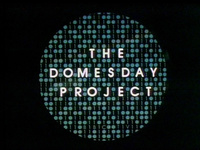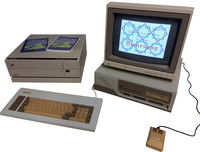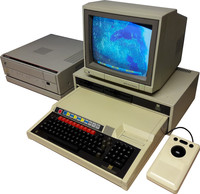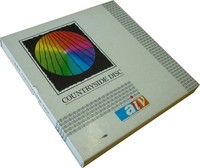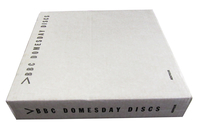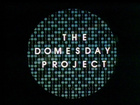Domesday System - BBC Domesday Discs
| Home > Browse Our Collection > Software > Acorn > BBC Micro Software > Domesday System - Laserdiscs > Domesday System - BBC Domesday Discs |
|
The BBC Domesday Project was a partnership between Acorn Computers Ltd, Philips, Logica, and the BBC to mark the 900th anniversary of the original Domesday Book, an 11th century census of England. The data on the discs was compiled between 1984 and 1986, and published in 1986. It included a new 'survey' of the United Kingdom, in which people, mostly school children, wrote about geography, history or social issues in their local area or just about their daily lives. This was linked with maps, and many colour photos, statistical data, video and 'virtual walks'. Over 1 million people and 14,000 schools participated in the project. The project also incorporated professionally-prepared video footage, virtual reality tours of major landmarks and other prepared datasets such as the 1981 census. The information recorded from the Domesday Project was stored on adapted LaserDiscs in LaserVision Read Only Memory (LV-ROM) format. The discs were adapted by Philips to store still pictures, computer graphics, text, maps, and computer date, as well as the TV pictures they were already capable of storing. The Philips LaserVision player was controlled by the Master AIV computer, which was an Acorn BBC Master fitted with a SCSI controller and the 65C102 "Turbo" co-processor. TheMaster also had a Videodisc Filing System (VFS) ROM to handle the blocks of text, still and moving pictures. When it was launched in 1986 the BBC AIV system cost £5156.75 (inc VAT). The system came as a five-part package which included the Master AIV, an Acorn trackerball, a Philips RGB colour monitor, a Philips LV-ROM player, the Domesday discs, and all connecting cables and manuals. The BBC Domesday System is often used as an example of technical obsolence as the LV-ROM discs were immediately superceded by the smaller and more capable CD-ROM technology. Today the remaining discs are subject to 'bit rot' or data degradation as the bonding material between the two layers of plastic breaks down, oxygen penetrates between the layers and starts to oxidise the metallic layer. This renders the discs and data unreadable.
Related Items in the Collection:Other Software by BBC Enterprises:
Information About BBC Enterprises:
This exhibit has a reference ID of CH55515. Please quote this reference ID in any communication with the Centre for Computing History. |
 Click on the Images
Click on the ImagesFor Detail |

